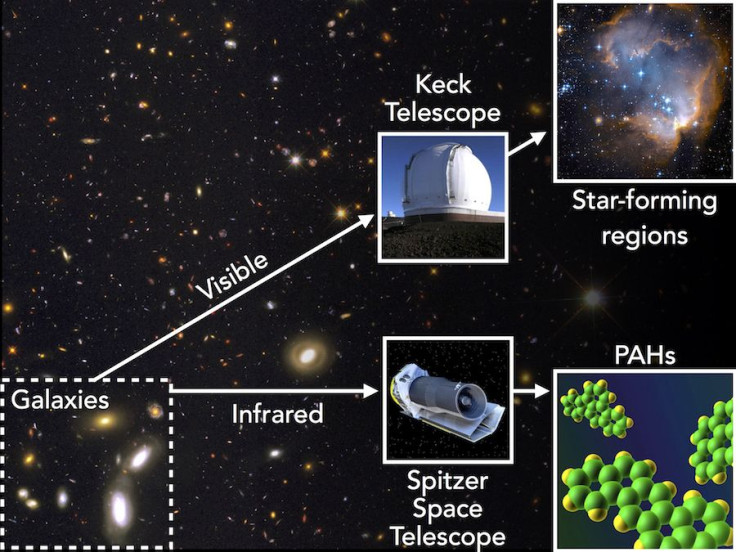Star Formation Activity In Early Universe May Have Been Much Higher Than Previously Thought

A survey of a class of organic molecules called polycyclic aromatic hydrocarbon (PAH) has revealed that the rate of star formation in the early universe may have been much higher than previously thought. The distribution of these molecules, which is a key component of interstellar dust and is believed to have played a crucial role in the formation of life on Earth, was mapped as part of the University of California-based MOSDEF survey.
“Despite the ubiquity of PAHs in space, observing them in distant galaxies has been a challenging task,” Irene Shivaei, a graduate student at University of California, Riverside, said in a statement Wednesday. “A significant part of our knowledge of the properties and amounts of PAHs in other galaxies is limited to the nearby universe.”
Read: When The Universe Was Young, Light May Have Been A Lot Faster
The survey used the Keck telescope in Hawaii to observe the content of about 1,500 galaxies when the universe was 1.5 to 4.5 billion years old, and incorporated infrared imaging data from the NASA Spitzer Space Telescope and the European Space Agency’s Herschel Space Observatory. This helped the researchers trace the PAH emission in mid-infrared bands and the thermal dust emission in far-infrared wavelengths.
These observations revealed that the emission of PAHs is suppressed in both low-mass and low-metallicity galaxies, which abounded in the early years of the universe. This was most likely because the organic molecules are unable to withstand the intense radiation-rich environment of these galaxies.

This, in turn, led the researchers to conclude that star formation activity and infrared luminosity in the universe 10 billion years ago was about 30 percent higher than previously measured.
“Studying the properties of the polycyclic aromatic hydrocarbon mid-infrared emission bands in distant universe is of fundamental importance to improving our understanding of the evolution of dust and chemical enrichment in galaxies throughout cosmic time,” the University of California said in the statement. “The planned launch of the James Webb Space Telescope in 2018 will push the boundaries of our knowledge on dust and polycyclic aromatic hydrocarbon in the early universe.”
© Copyright IBTimes 2025. All rights reserved.






















